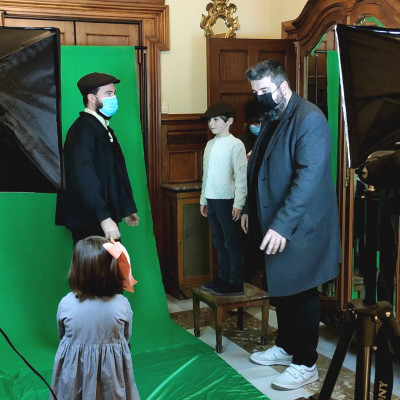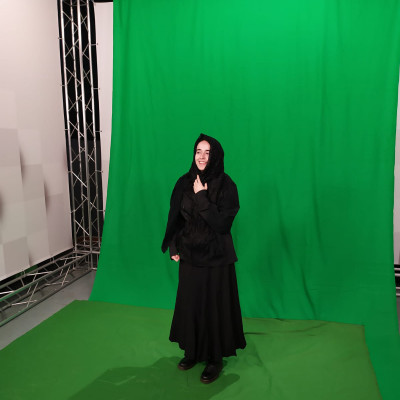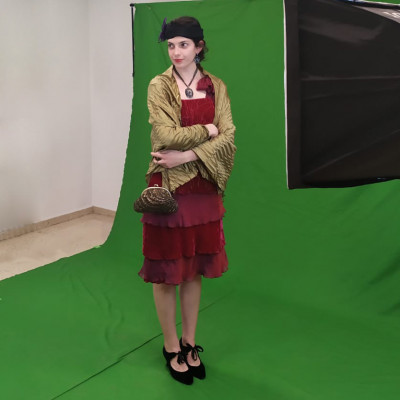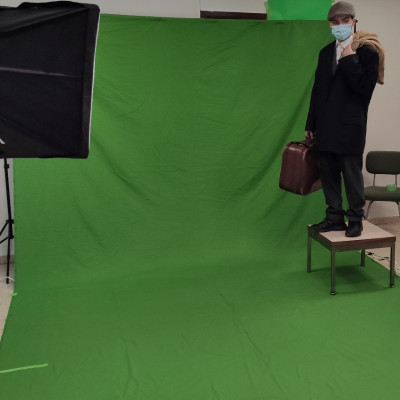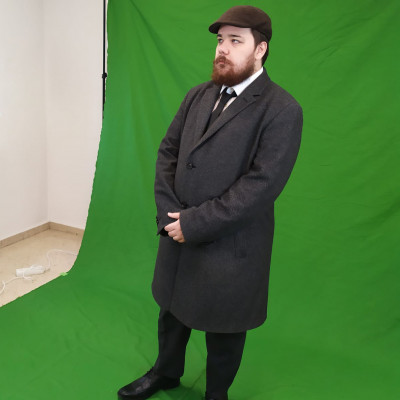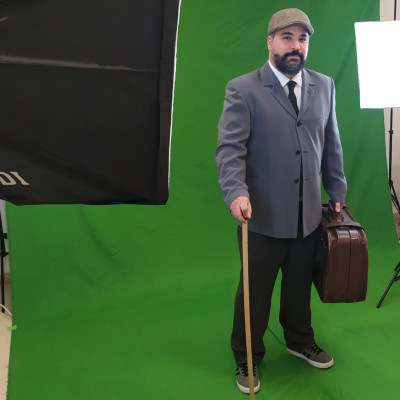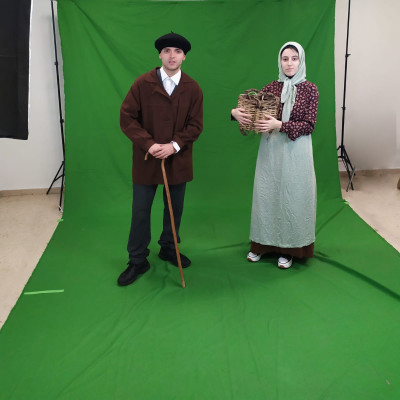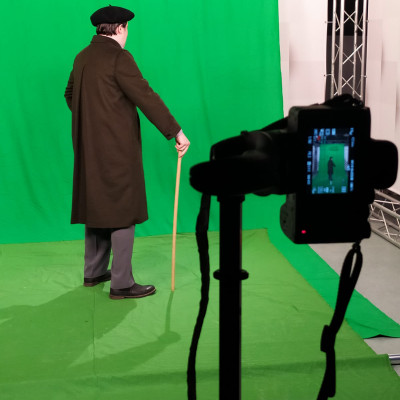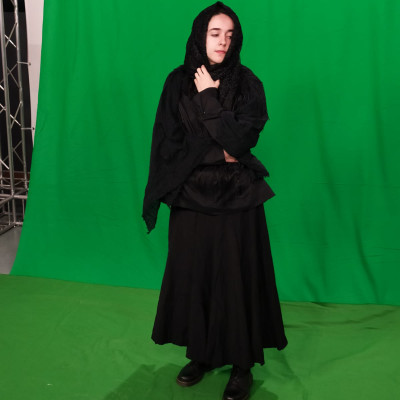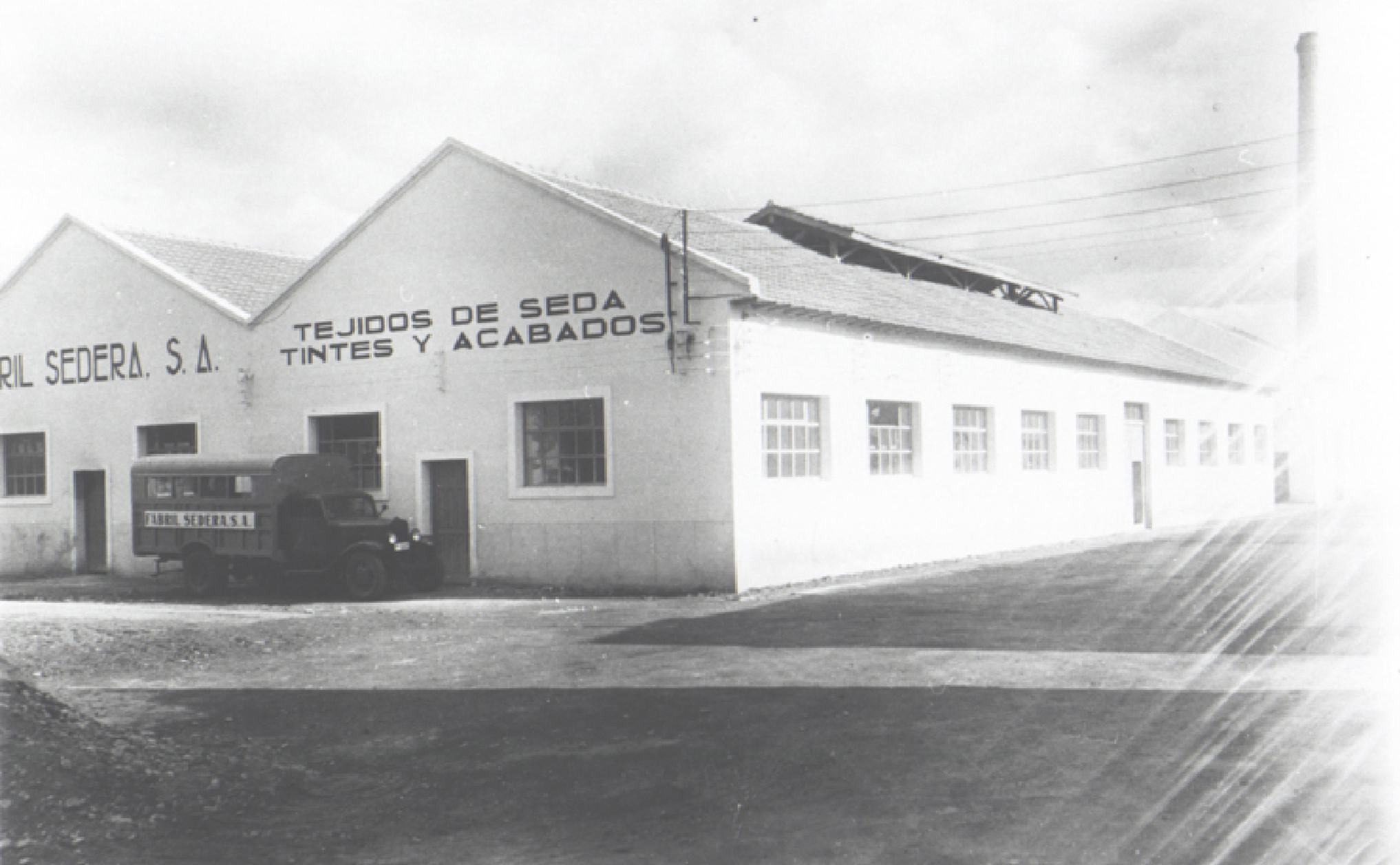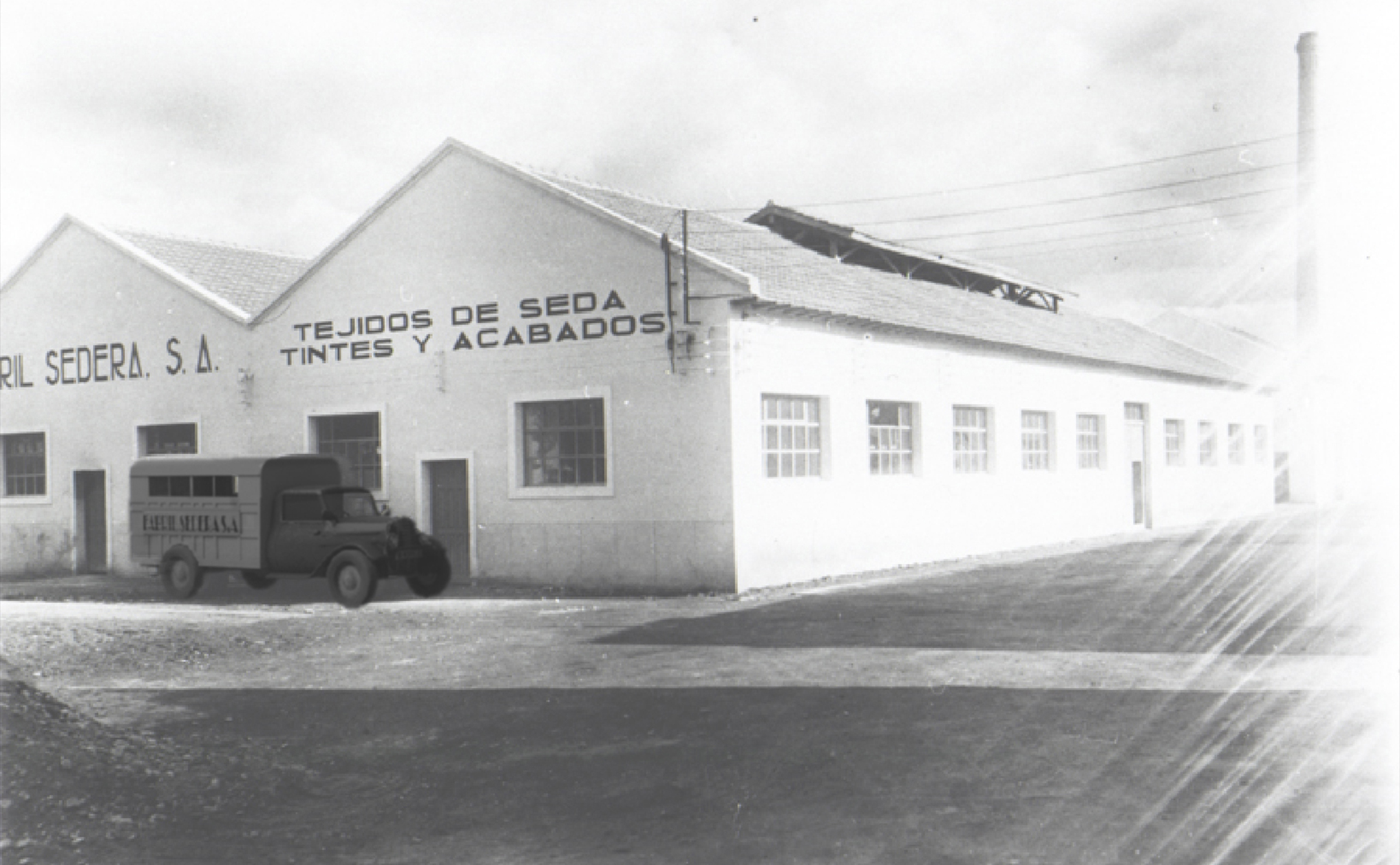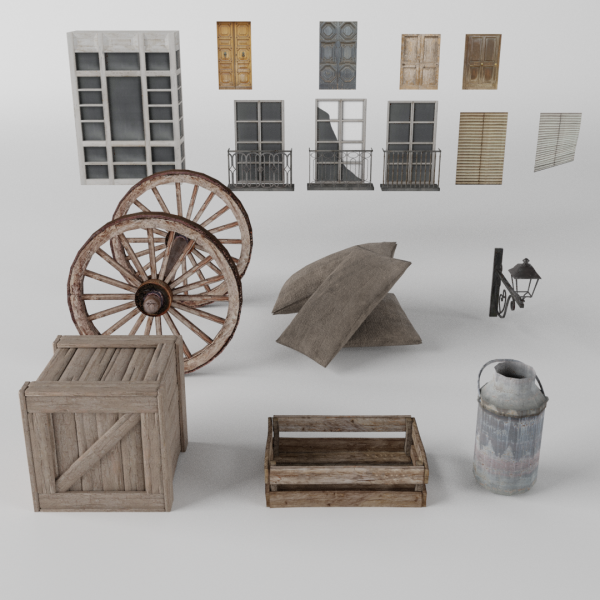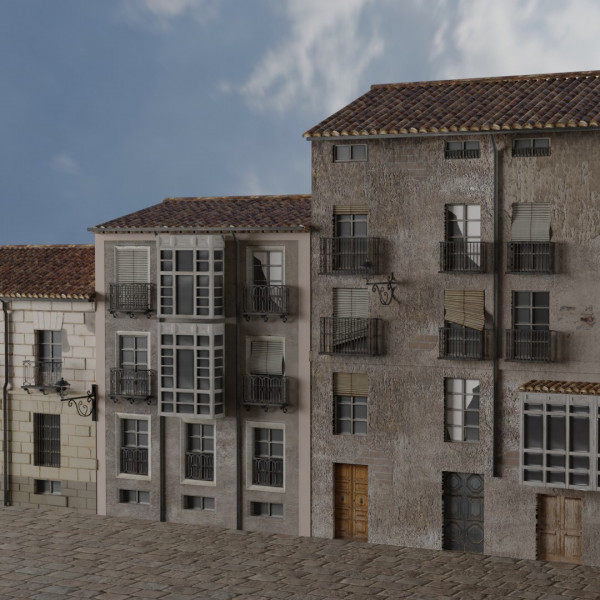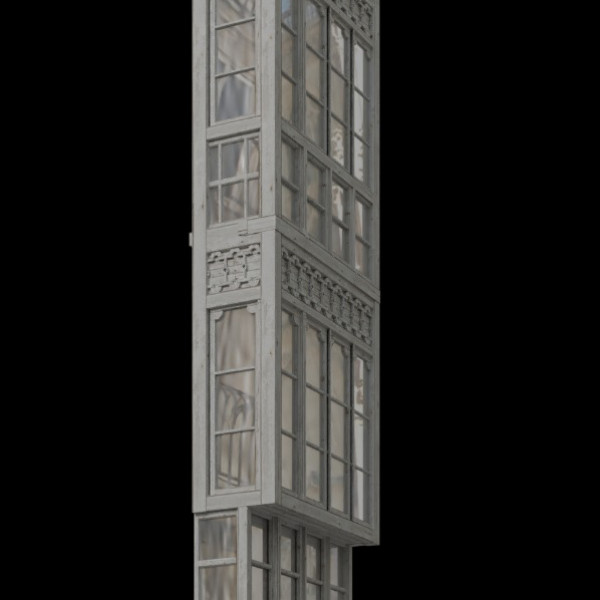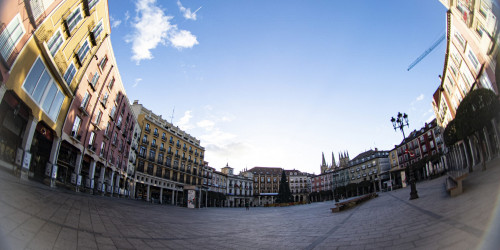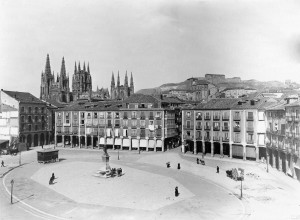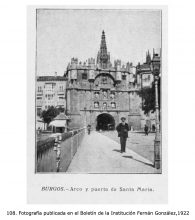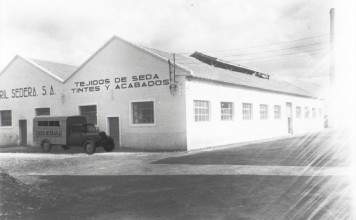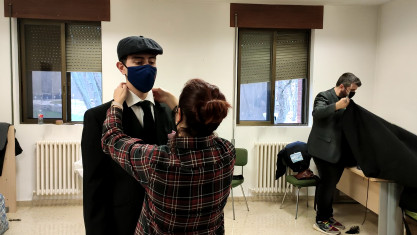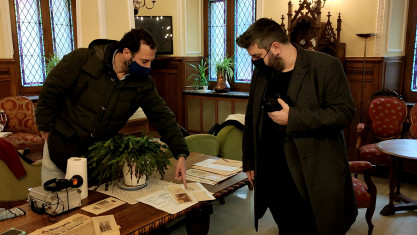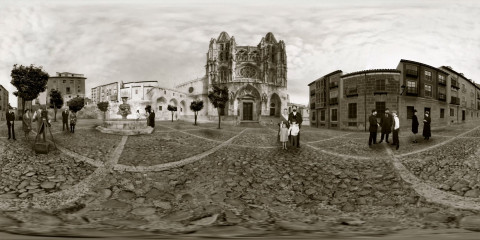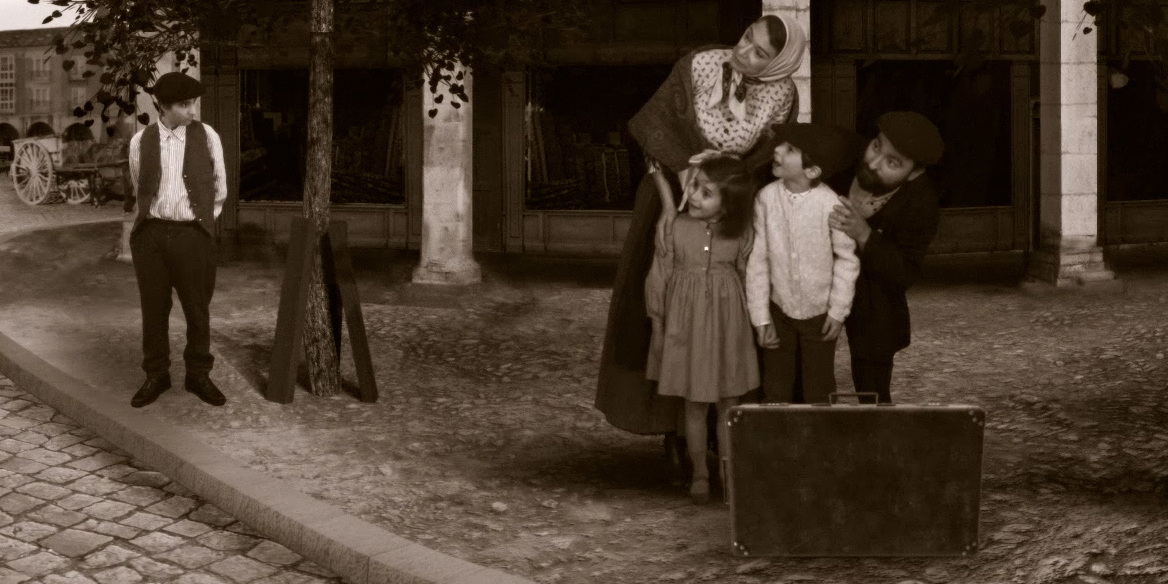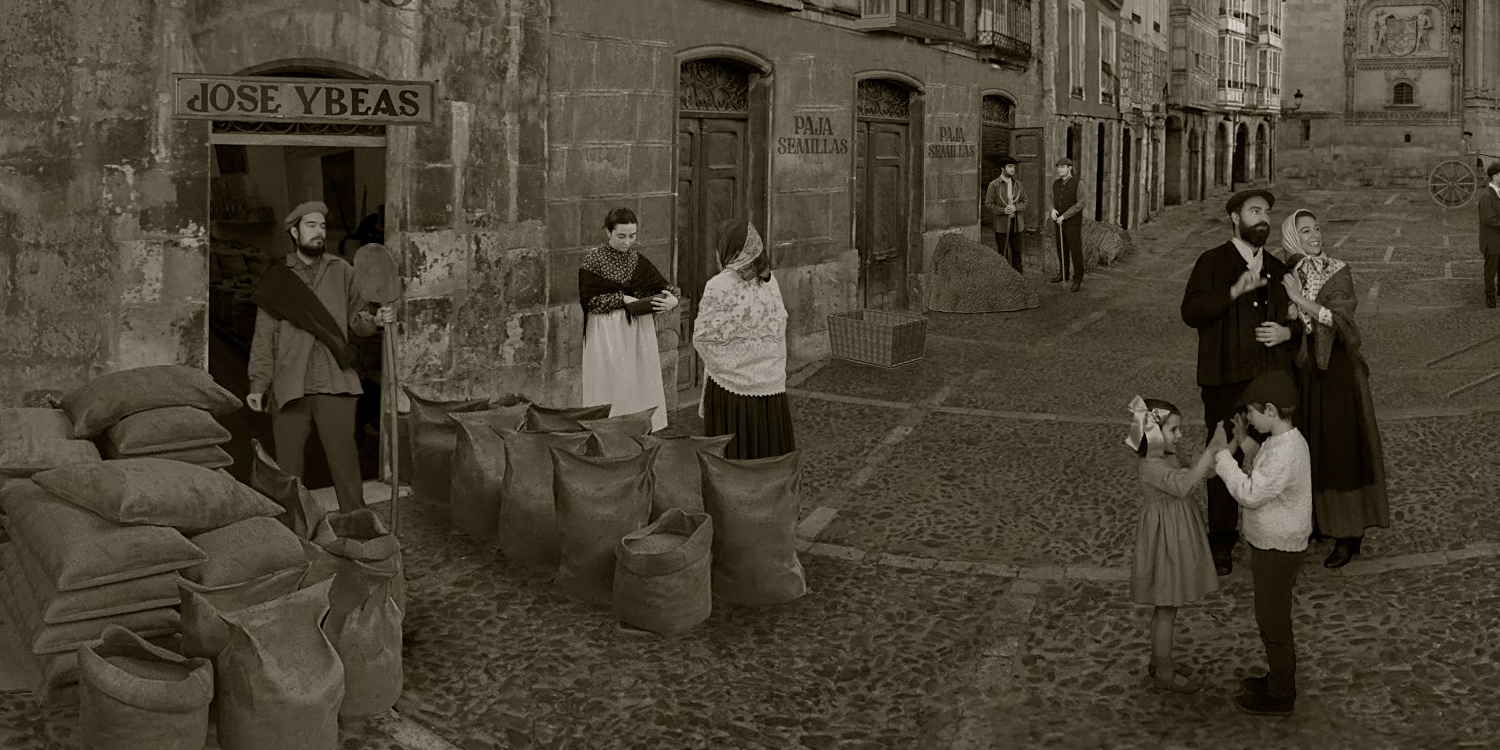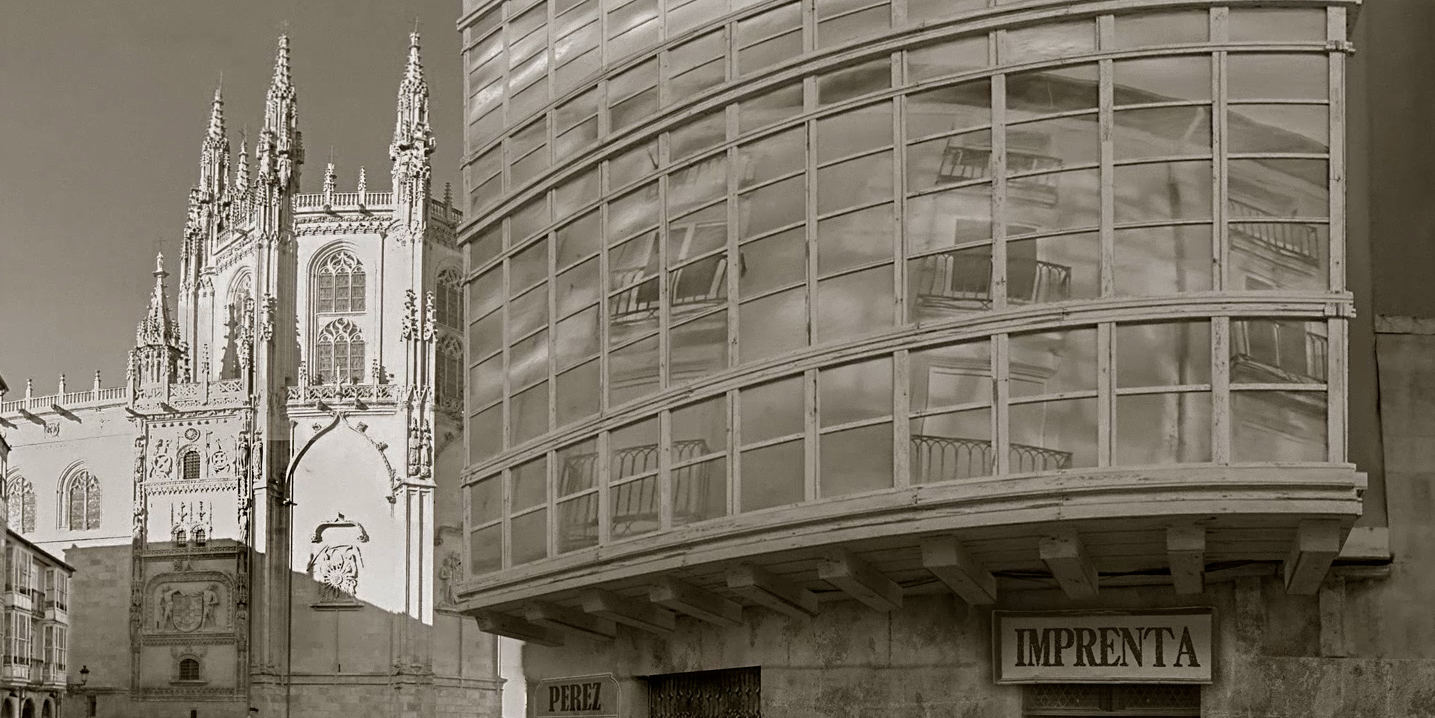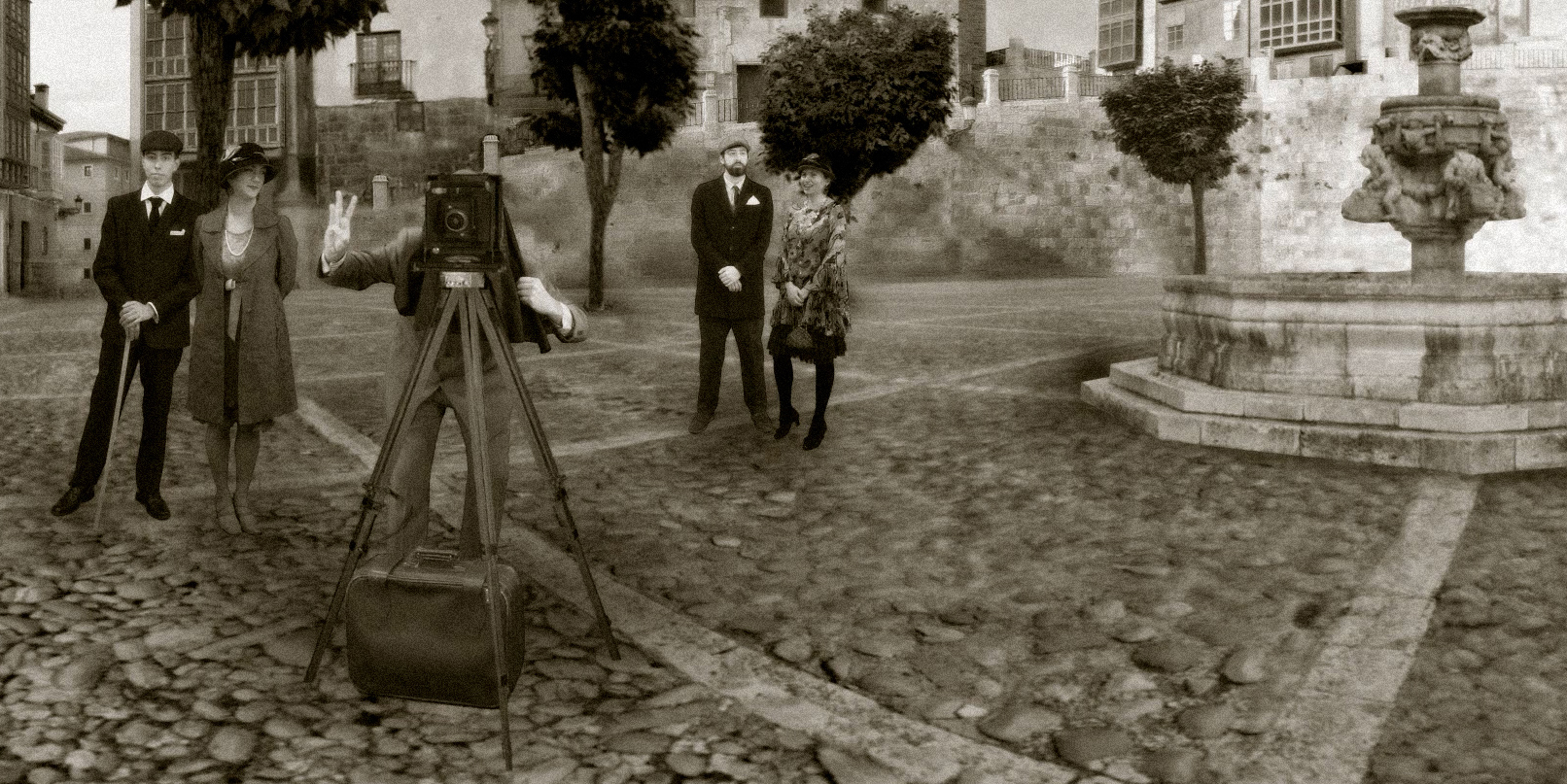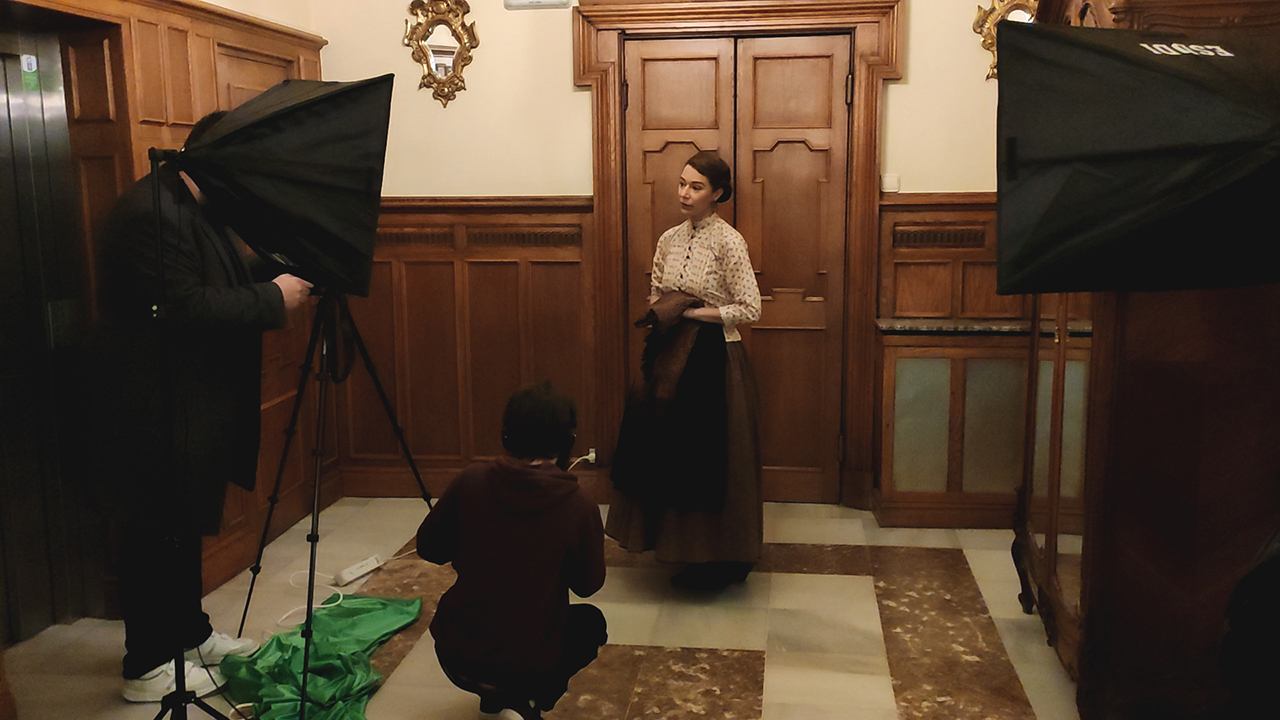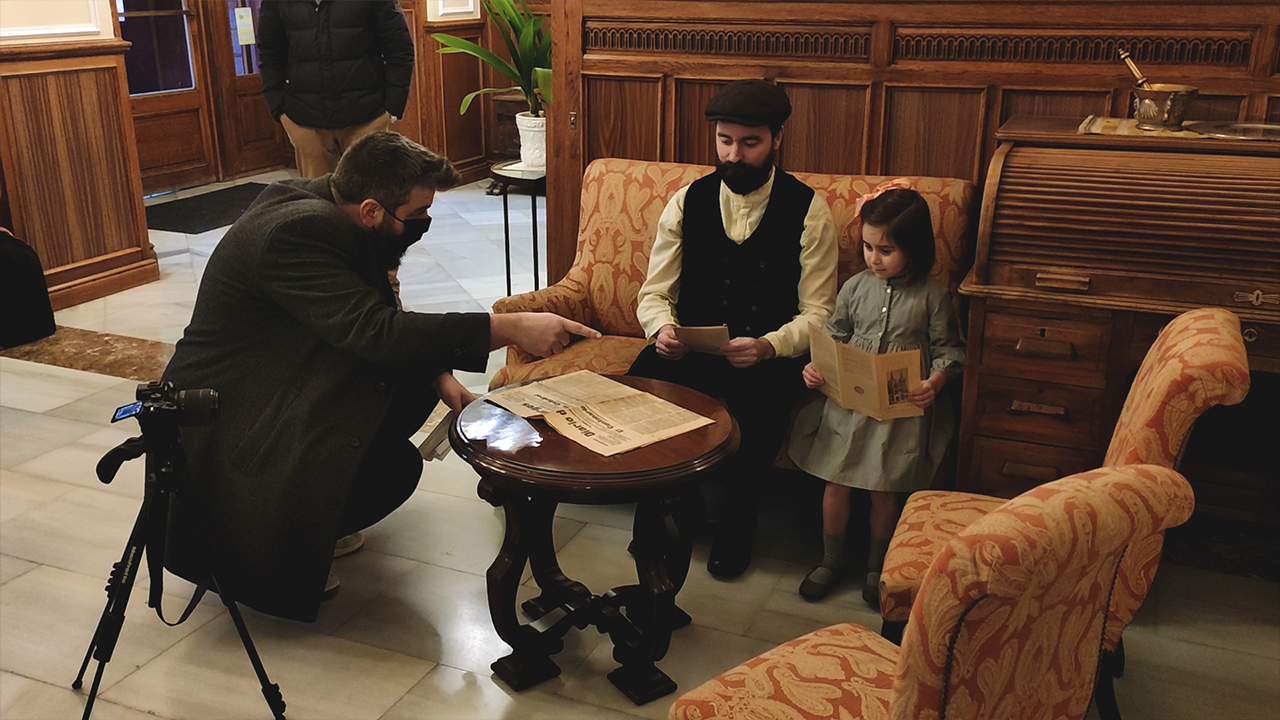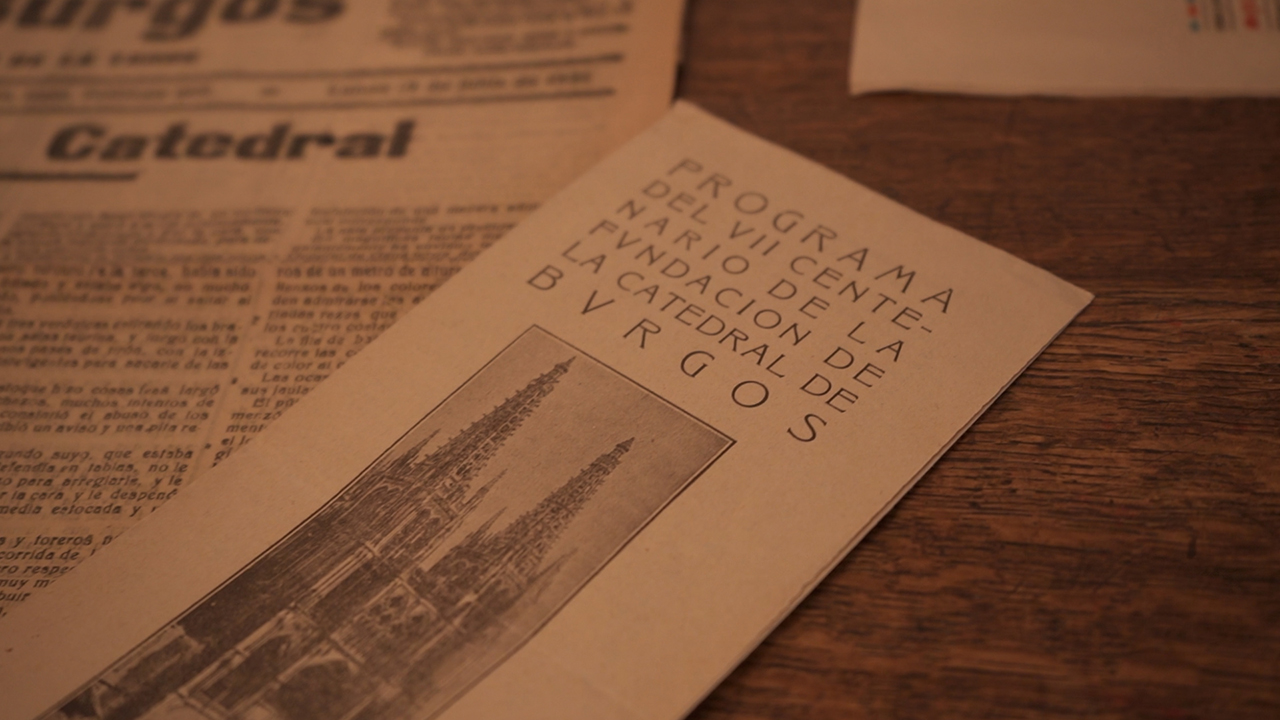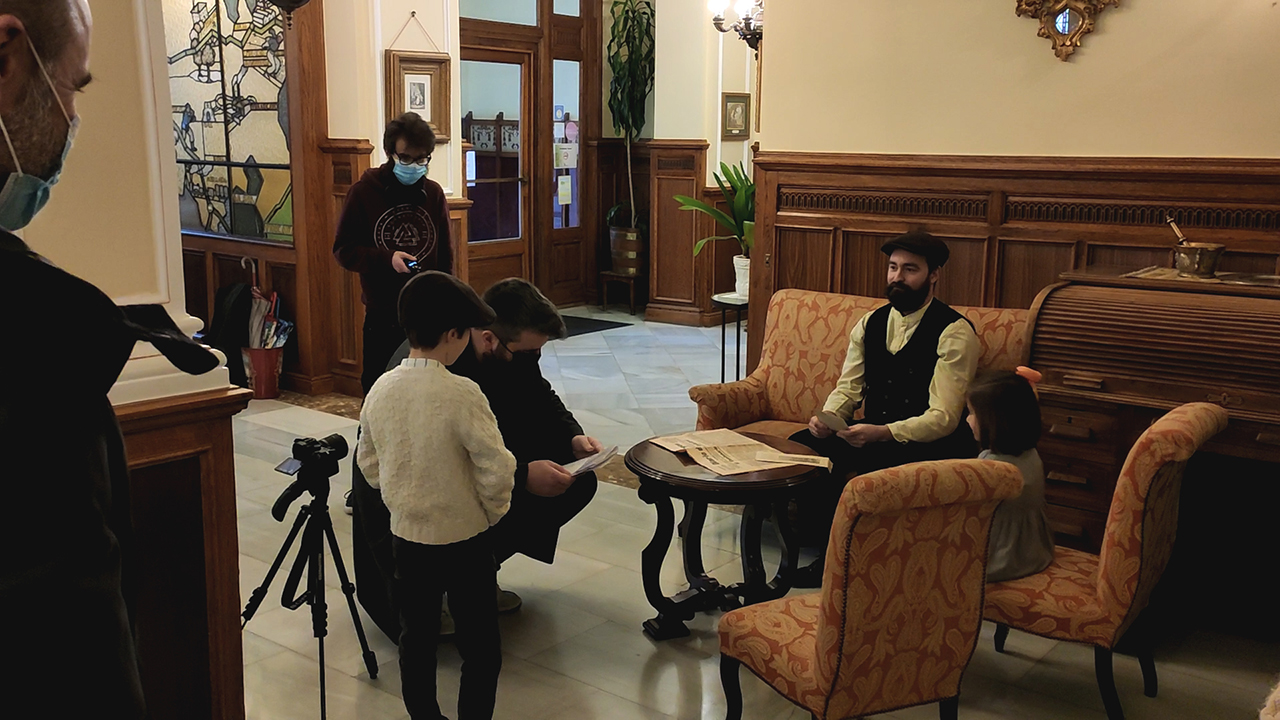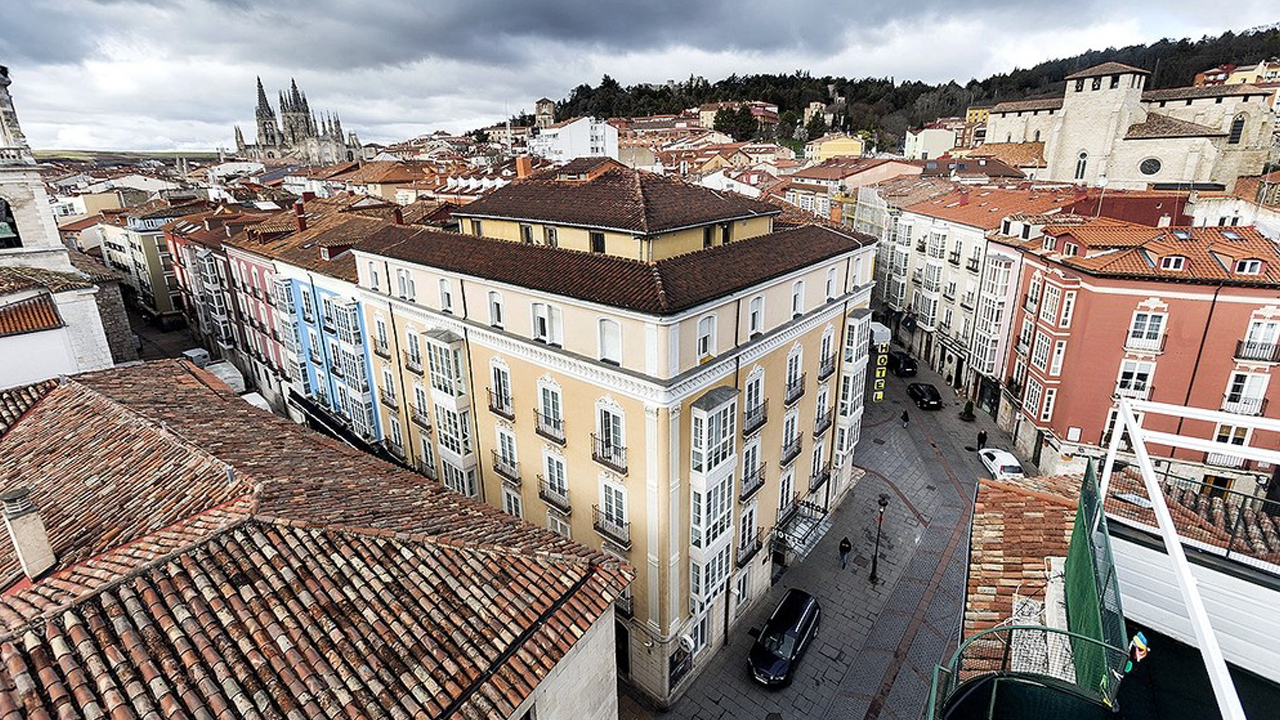Burgos 1921
360º virtual heritage reconstruction of the city of Burgos in 1921.
Winners of the e-volution award
Virtual reality experience winner of the -evolution awards in the virtual reality category in the 2022 edition.
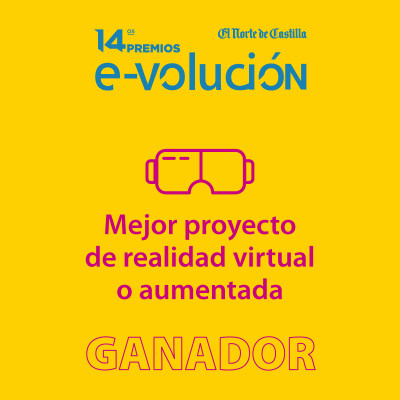
Burgos 1921: Virtual reconstruction in 360º.
In 1921, the Cathedral of Burgos was 700 years old since the beginning of its construction. The city and all its institutions set out on the road to pay homage to its greatest historical and artistic treasure, celebrating that first stone of the cathedral initiated by King Ferdinand III and Bishop Mauricio. A century later, the VIII Centenary Foundation has joined the city for the celebration of such an important event, also counting on the University of Burgos and the CAYPAT Research Group to commemorate the last centenary of the eternal Cathedral of Burgos, reconstructing in detail the life and environments that surrounded it at the dawn of the twentieth century.
This initiative arises from the VIII Centenary Foundation of the Cathedral of Burgos as part of a major exhibition to commemorate, in 2021, the 800 years of history of this world heritage monument.
Visit the 360º experience
Visit the 360º immersive scenes in the different locations and watch the short presentation film to enjoy the experience.
Santa Maria Square
Space at the foot of the Cathedral and place of celebrations and events at the entrance to the temple.
Plaza Mayor 1921
It was the center of urban life in Burgos at the beginning of the 20th century, a place of commerce and strolls.
Llana de Afuera
Ancient commercial area related to the agricultural world and the trade of seeds and cereals.
Short film Burgos 1921
An endearing family from a village in the province travels to the capital to visit the city center and the cathedral from the old station.
Making off
Discover how the Burgos 1921 experience was made from the hand of its creators.
Photography and photogrammetry
The 360º scenes are based on a 3D reconstruction on a real photograph that serves as a reference and as a base on which the different reconstructed models will be placed. The first step at a technical level is focused on taking 360º photographs of all the locations using the HDR technique, which makes it possible to obtain photographs with greater dynamic range, i.e., lighter whites and darker blacks, thus achieving greater definition and quality in the result. On the other hand, photogrammetry is a technique based on building a 3D model from a series of photographs of that space. In this case, few photographs have been taken to speed up the process since only a basic model was needed to be used as a reference in the 3D space, that is, to have a 3D starting model that fits with the 360º photographs in order to combine the real photographs with the different 3D models.
Character recording
A remarkable aspect within the level of detail and realism of this reconstruction is the recording and inclusion of real characters. The green screen or "Chroma key" recording technique consists of recording real actors on a green set and then replacing the background with the 3D digital environment. For these 3 scenes in 360º, more than 75 characters characterized as Burgos inhabitants of 1921 have been recorded in detail, taking into account the documentation and the supervision of professionals in this field. The costumes are a differential aspect in virtual reconstructions as it requires a large amount of documentation and resources to recreate it faithfully, especially in a 360º experience where everything is visible and you can not choose what content to show.
The case of the Burgos railroad station in 1921.
The old railroad station in Burgos is another of the places recreated, in this case for the short film. The recording and inclusion of characters in this scene helps to understand the lifestyle of the time through their actions and clothing.
3D modeling for heritage
The 3D modeling for this broadcasting work had to be fast and simple but without losing level of detail by relying on texturing, character inclusion and postproduction to ensure that quality. Thus, a list of "assets" or objects to be modeled has been elaborated, including buildings, vehicles, environmental elements, urban furniture... Once the list was clear, the assets have been modeled with a medium level of detail using the extensive graphic documentation as a base. All the assets have been modeled in Blender.
Texturing of models
The texturing of the models is the part that consists of applying materials to the 3D models previously created. For this, our team takes photographs of the real materials in the locations to be recreated or, if they do not exist, in similar locations in terms of historical accuracy.
Another way to get more generic materials is to generate them digitally from libraries of images and textures. This process is faster but does not guarantee the same historical realism as using custom materials, that is why it is only used in the most generic materials such as metal, tree trunks or skies...
Composition
The composition phase consists of combining all the layers obtained so far: original 360º photographs, photogrammetry, recorded characters, effects and other resources and grouping them into a single scene. A final color correction is also performed and the finer details such as shadows or reflections are retouched.
Burgos 1921, the 7th Centenary
A pioneering virtual reconstruction
Dissemination of heritage on a large scale
The dissemination of knowledge through the mobile interface is simple to use, accessible and intelligible to all ages and levels, making it an optimal tool for any educational stage. Its communicative potential opens the door to being able to enjoy the reconstructed environments in a unique way: you could see single photos, but not feel in the middle, literally, how each square and the life in it was.
Rigorous historical documentation
The first work in the management of the project involved the exhaustive analysis of the documentary and graphic sources of the history and the city of Burgos through its archives, publications and collections. The documentation and research work, led by a team of university professors and collaborators, made it possible to reliably reconstruct the different environments of the Burgos Cathedral in 1921.
Team
The key to all dissemination and popularization work is to have a team of professionals capable of controlling all areas. Specialists in heritage, urban planning, art, vehicles and clothing have come together here to offer a documentary germ that the technicians in virtual reconstruction of heritage have turned into a remarkable project at a national level, in accordance with the quality and finish with which they work.
360º video as support
The approach of the historical, urban and social reality of the time is made tangible for all audiences in three basic points of Burgos life: the Plaza Mayor, the Llana de Afuera and the Plaza de Santa Maria, emblematic places whose appearance and uses at the beginning of the twentieth century were unknown to much of the current population, building a virtual bridge between the past and the present of the city.
Storytelling
To create a more immersive narrative feeling and provide more information to the user, characters are included with a very clear objective: to tell small stories of daily life in Burgos in 1921. This helps to better understand the environment and the way of life while bringing life and dynamism to the scenes.
Shooting of the short film
The recording of the short film has required a great pre-production task in order to record all the material with the minimum artistic and technical equipment possible due to the current situation. The filming was successfully carried out at the Hotel Norte y Londres in Burgos. This hotel was founded in 1908 and maintains much of its original floor plan and decoration, which made it the best candidate for the location. Other highlights of the filming are the characterization, the original documents shown and the recording of jokes on the set itself to include these actors in the 360º scenes.
Teamwork
This project has been carried out between the VIII Centenary Foundation of the Cathedral and the University of Burgos. You can learn more about us here.
Coordination and historical advice
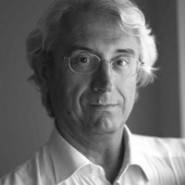
Miguel Ángel Moreno Gallo
Profesor colaborador de la Universidad de Burgos e investigador en múltiples ámbitos, destacando como documentalista histórico y gráfico.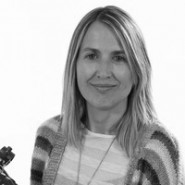
Mar Chicharro Merayo
Profesora titular del grado en Comunicación Audiovisual de la Universidad de Burgos. Especializada en ficción y representación cinematográfica de época.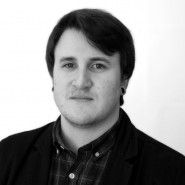
Adán Ruiz Román
Docente del área de Geografía Humana y de secundaria. Documentalista, especializado en difusión y divulgación del patrimonio histórico.Technical team

Mario Alaguero Rodríguez
Profesor del Área de Comunicación Audiovisual y Publicidad de la Universidad de Burgos.
Samuel Arias Tejedor
Técnico especialista en enviroment, renderizado y programación. Universidad de Burgos.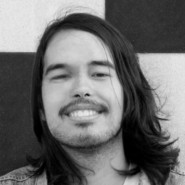
Bruno Rodríguez García
Técnico en modelado y animación 3D y en grabación y edición de video. Universidad de Burgos.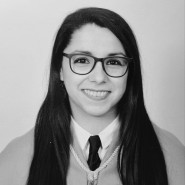
Esmeralda Ferreras Ferreras
Graduada en Historia y Patrimonio. Máster en Patrimonio y Comunicación en la Universidad de Burgos.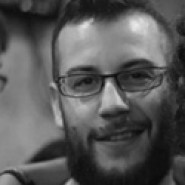
Javier Mateos Luis
Técnico especialista en modelado 3D y texturizado de assets.Artistic Team
Violeta Ollauri Torres
Actríz principal.Jairo Cuentes Redondo
Actor principal.Elsa Trigo Pinto
Actríz, hija.Ignacio Trigo Pinto
Actor, hijo.360º video extras
Patricia Fernández Mata, María Mata Pinto, Eduardo Martín Ortiz, Elena Ahedo Echevarría, Rodrigo Mena Ruiz, Alejandro Goicoechea Román, Íñigo Turrientes Villanueva, Alejandro Villar Solla, José de la Fuente Rodríguez, Raquel García Gorraiz, Nuria Delgado Yela, Ángela Rodríguez San Martín, Andrea Martínez Santamaría, Víctor Gómez Muñiz, Juan Tostón, Javier, Mar Chicharro Merayo.
